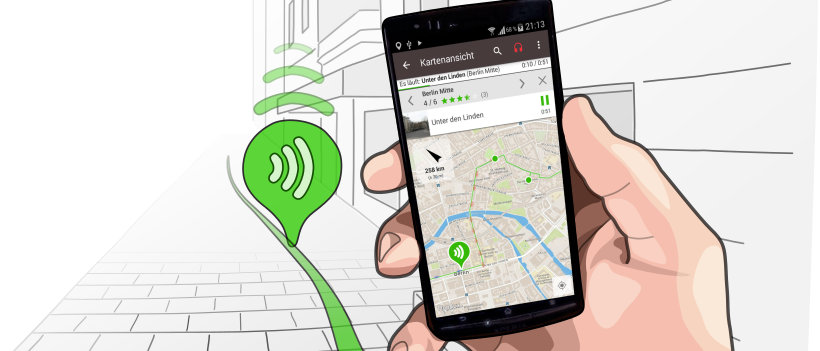The Bauhaus Houses with Balcony Access are a prime example of progressive social housing construction in the late Weimar Republic. Now we will look at a completely different answer to the housing question. If you stand in front of the property to the right of the House with Balcony Access at Mittelbreite 14, you are in the right place.
I would now like to tell you about a few buildings that no longer exist – ones that people don’t like to talk about today. Between 1933 and 1935, Dessau’s National Socialist municipal authorities had a total of eight large barracks built here, on the neighboring properties and across the street on the other side of Mittelbreite.
The purely functional low-rise buildings served as temporary accommodation for families who were unable to pay rent due to the “crisis” and whose original homes had been forcibly vacated. Each family was given one room. The furnishings were minimal: There were water taps and simple toilet facilities, but no facilities for garbage disposal or ash removal. Families that the Nazi regime generally stigmatized as „asozial“ (“anti-social”) were assigned to the temporary housing.
The complex as a whole had more the character of a „Lager“/camp than a neighborhood. Occupancy was determined by “assignment.” The police were responsible for administration. At times, there was even talk of giving the caretaker of the barracks the status of an “auxiliary police officer.”
Finally, a ninth barracks was erected on the edge of the property. From 1936 onwards, it served as a base for the Hitler Youth. What the presence and proximity of this political youth organization meant for the residents of the barracks has not yet been researched.
However, the overall situation, i.e., the existence of homeless barracks administered by the police, led to social conflicts in the neighborhood and a decline in the value of the residential area around the Houses with Balcony Access.
It is likely that the location of the barracks directly between and opposite the Houses with Balcony Access was not coincidental, but deliberately chosen. This is because the buildings were a Bauhaus legacy. The Nazis, who had been in power in the State of Anhalt since 1932, wanted to permanently discredit Bauhaus, its values, and its legacy.
All of the barracks have now disappeared, and most of the plots are occupied by single-family homes. Incidentally, from 2019 to 2021, the plot you may still be standing on was home to a reconstruction of a single-family home designed by Ludwig Hilberseimer, which was meant to be mass-produced in the settlement by Bauhaus at the time. The reconstruction was a project by the University of Kassel. The house was on display here for a year and a half and now stands on Lutherplatz in Kassel, where it is used as a research station.
The next stop is a little further down the street, at the House with Balcony Access at Mittelbreite 6.
Homeless barracks
De l'audiowalk Audio walk around the Houses with Balcony Access of the Bauhaus settlement | Dessau

12
Stations
49:41 min Audio
2.68 km 16
49:41 min Audio
2.68 km 16


